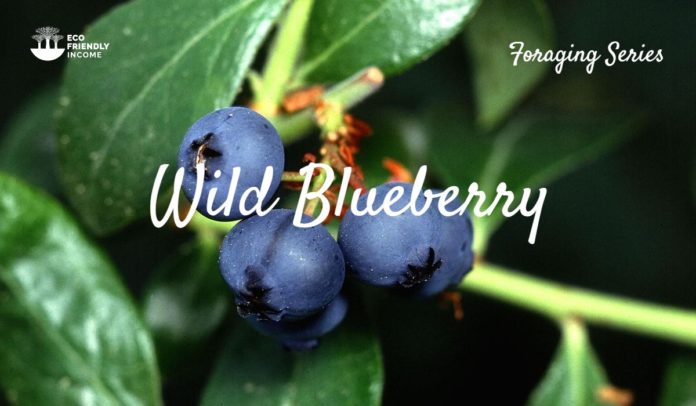Blueberries (Vaccinium Angustifolium) are one of the best wild berries you can forage. Although you don’t have to limit yourself to picking wild ones, you can also propagate blueberries yourself.
They’re an iconic treat that’s packed with nutrition. Some even say blueberries are a superfood.
You can make jams with it, pies, smoothies, and add them to all sorts of breakfasts. How can someone say no to delicious blueberries?
The thing is, store-bought blueberries are grown in large plantations. They’re still delicious but if you’ve ever had wild blueberries, you just know how much tastier they are!
As a tree planter working in the forest, I see wild blueberries every year. When they’re in season, it’s really hard for me not to stop and eat them along the way, how can I resist?
There are a variety of blueberry species though, I hadn’t learned that until recently. Turns out when I was picking them, I was eating some from different species without really knowing!
That’s because visually they don’t look very different, you have to look at certain details of the plant to know.
Also, when I forage for blueberries, I really try to pick sustainably, and I think everyone should too.
If you go out ripping out all the wild plants near you, the populations might just not recover at all. Additionally, you’re not leaving much for wildlife, they love them too!
So today I’d like to share with you my knowledge of this wonderful wild fruit.
Here’s what you can expect to learn in this article:
- Picking Season
- How to Identify Wild Blueberries
- Where You Can Find Them
- How to Harvest Sustainably
- How to Propagate Wild Blueberries
- How to Store Them
Let’s get started!
Wild Blueberry Picking Season
In the North
Northern wild blueberry picking season start in late July and lasts until September.

In the South
Southern wild blueberry picking season start in late May and lasts until August.

Flowering Season
You must know: Their fruiting season can be affected by some factors.
First of all, for the plant to make fruits, they need to have a successful flowering season.
Blueberries flower early in the spring, sometimes when temperatures at night still drop below zero.
This can be a problem for this reason:
Blueberry flowers cannot withstand frost, they will wither and turn brown.
This is problematic because when this happens, the flowers don’t get the chance to pollinate. That means the plants won’t be able to produce fruit this season.
How to Identify Wild Blueberries
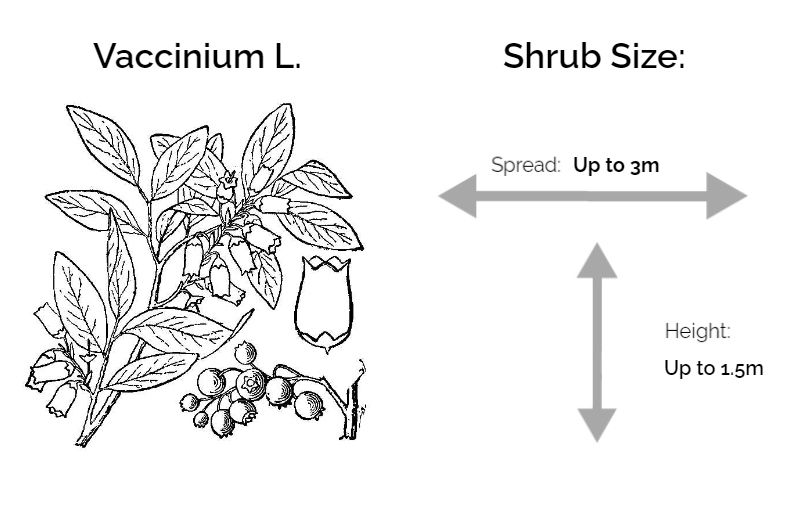
If you want to propagate blueberries, you’ll need to know what species of blueberries grow here. These are the common native species of North America:
Northern Species
Canadian Blueberry (Vaccinium myrtilloides)
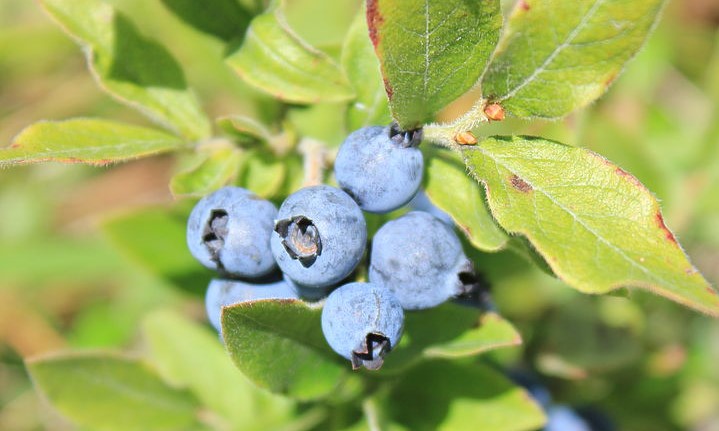
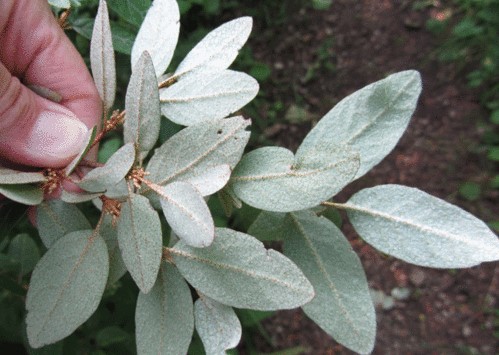
Canadian blueberry (vaccinium myrtilloides) is a low-spreading bush identifiable by its velvety leaves. A good way to recognize them is by looking at the stems and leaves.
- The stems, like the leaves, have small fuzzy hairs
- The fuzzy leaf margins are entire (smooth, no teeth).
Additionally, Canadian blueberry is a companion plant to the lowbush blueberry. They often grow together and can interbreed
Lowbush Blueberry (Vaccinium angustifolium)
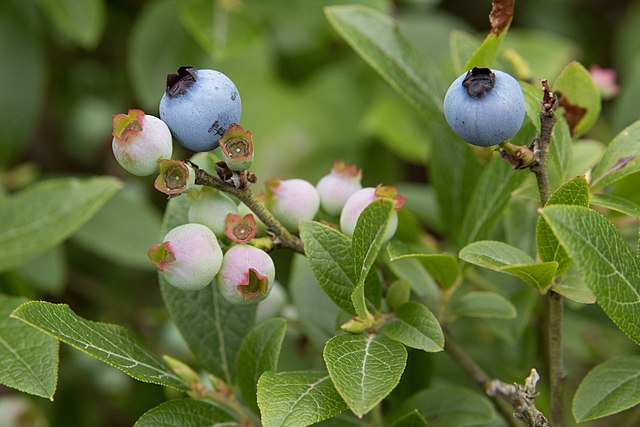
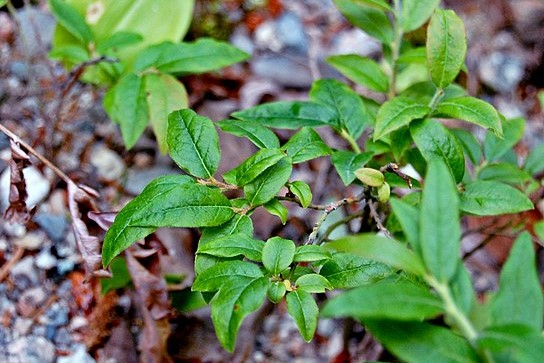
Lowbush blueberry (Vaccinium angustifolium) is another low-spreading bush commonly found colonizing open ground. It spreads by rhizomes (underground roots).
There are a few traits to look at to differentiate them from other blueberry species:
- If you look closely at the leaves, they have serrulate margins and pointy ends.
- The leaves are thinner than common blueberries and are devoid of hairs.
Bilberry (Vaccinium myrtillus)
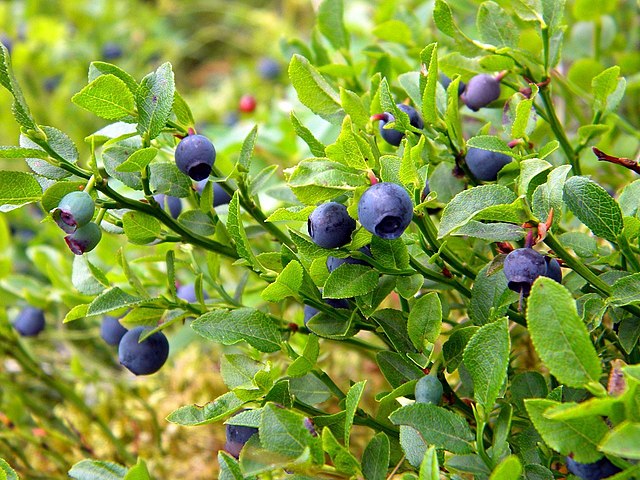
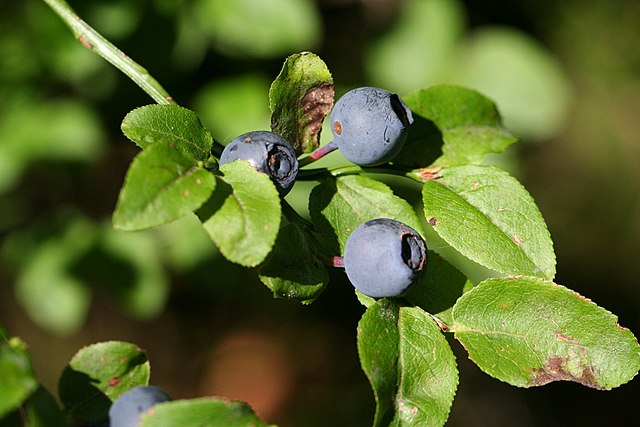
Bilberry (Vaccinium myrtillus) is a common species of blueberry found all over the world. There is much confusion with some American species of blueberries when identifying. Here’s how you can confirm what you’re looking at is the bilberry.
- The Flesh: Bilberry flesh is dark red, and fragrant. Its red juice turns blue under basic environment.
- The Bush: Bilberry grows on low bushes with solitary fruits, they don’t fruit in bunches.
- The Fruit: Bilberry texture is much rougher, and the juice will stain your hands and tongue.
- The Leaves: Bilberry leaf margins are serrulate, like lowbush blueberry, but the edges are not as pointy.
Highbush Blueberry (Vaccinium corymbosum)
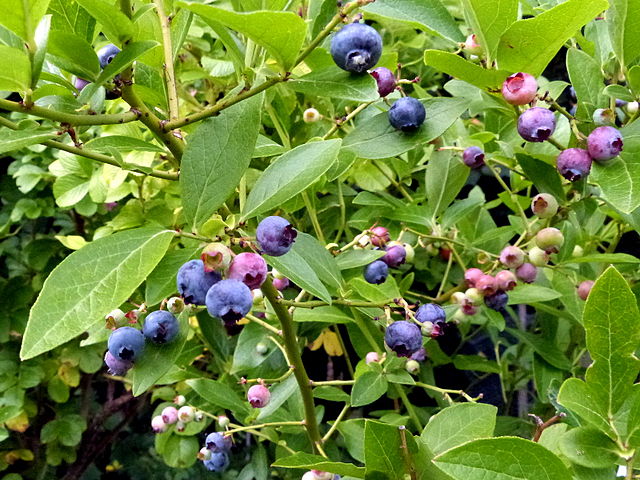
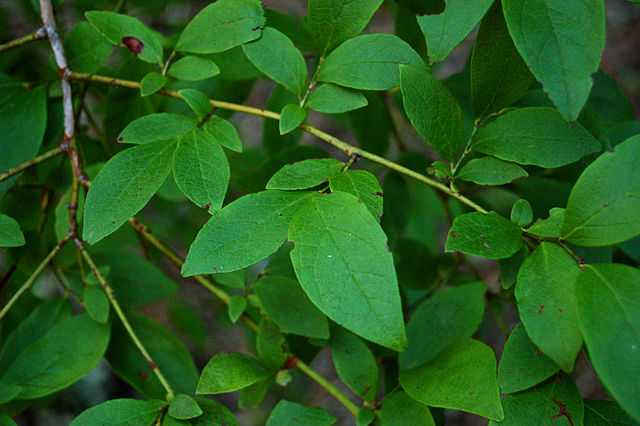
Highbush blueberry (Vaccinium corymbosum) is the largest-growing of all blueberry species. Their bushes can grow up to 12 feet in height! Their berries are also larger than regular blueberries.
Here’s how you can identify what you’re looking at is highbush blueberry:
- The leaves are much larger (up to 8cm long) and have entire margins (smooth, no teeth). They technically do but they’re very spread out and hard to see.
- Highbush blueberrie branches are thicker and spread upwards, it matures into small tree rather than a low-lying bush.
Southern Species
Darrow’s Blueberry (Vaccinium darrowii)
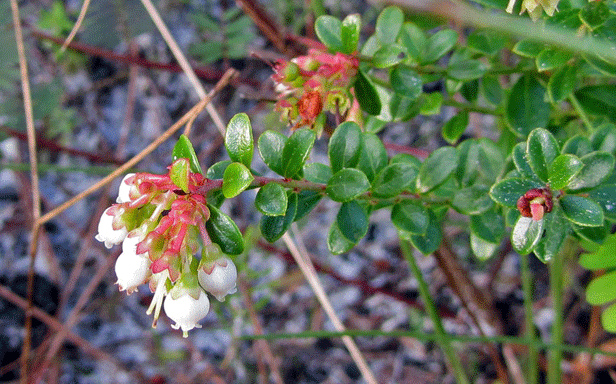
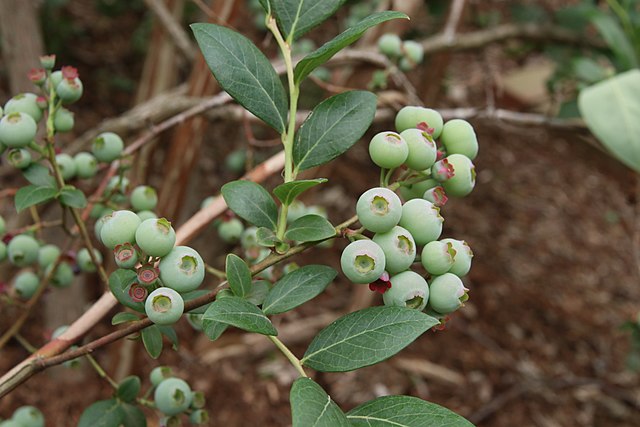
Darrow’s blueberry (Vaccinium darrowii) is a short, low-lying blueberry shrub with small oval-acute leaves. These are some characteristics you can look at to identify them:
- The leaves at the tips of the branches are light pink, and on the base of the plant a light blue-green.
- The most often grow associated with pine trees, in sand, acidic woodland.
- The bushes don’t normally grow as tall or wide as rabbiteye blueberry.
Rabbiteye Blueberry (Vaccinium virgatum)
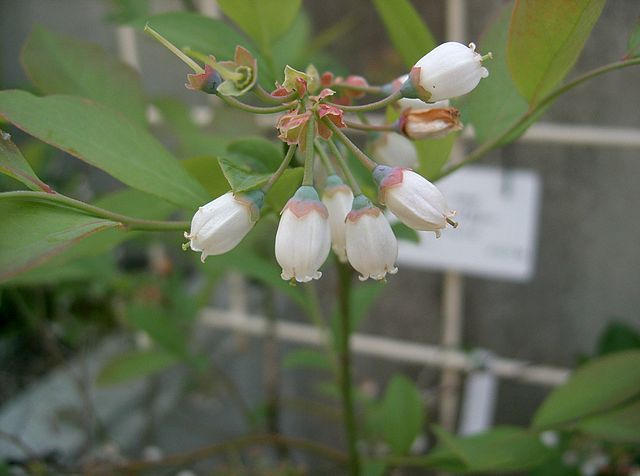
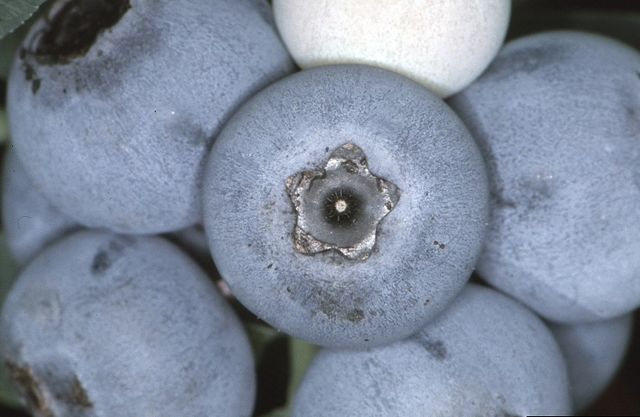
Rabbiteye Blueberry (Vaccinium virgatum) is a medium-sized bushy plant, with spirally-arranged leaves that grow up to 3 inches ea. Some characteristics to identify rabbiteye blueberry:
- The fruit has a thin waxy coating on it.
- Plants grow high, up to 6 feet tall, much taller than darrow’s blueberry.
- White to pinkish flowers, leaves are also larger than darrow’s blueberry.
- Grows only in southern states.
Where You Can Find Wild Blueberry
Vaccinium likes to grow in rocky landscapes in full sun, it’s often found growing in disturbed land like recently cleared forests.
Generally, you will find blueberry bushes growing in areas with acidic, well-drained soil.
It’s an understory shrub in mixed forests, and sand is a good indicator of where to find them.
Blueberries grow all over Canada and the U.S.
I’ve seen Wild Blueberry grow near the following plants:
- Labrador Tea (Rhododendron groenlandicum)
- Black Spruce (Picea mariana)
- Jackpine (Pinus banksiana)
- Bog Rosemary (Andromeda polifolia)
- Rhodora (Rhododendron canadense)
When you see any of these, you might find wild blueberries somewhere close, it’s always good to keep that in mind.
How to Harvest Wild Blueberries Sustainably
Since this plant is also an important food source for wildlife, you want to be very thoughtful of each vine when you pick.
My personal method for picking them sustainably:
- Find a blueberry bush.
- Pick some of the fruits off, but leave a few on them.
- Move on to the next plant.
Blueberries do spread by seed but more often through suckering. You’re leaving fruits for wildlife, it’s an important source of food for them!
How to Propagate Blueberries

Hardiness Zone: 2-9

Soil Type: Well-drained, acidic soil rich in peat

Water: Normal

Exposure: Full sun to Partial Shade
Wild Blueberry (Vaccinium L.) is a berry-producing shrub hardy up to zone 2. It can be propagated by seed, by taking cuttings, or even by division.
Commercial Value
There are already large-scale commercial operations that propagate blueberries. The fruits are delicious and they have nutritious properties that make them popular.
They are rich in antioxidants, and they contain anthocyanidins which are said to be anti-cancerous.
Growing and propagating them can become quite profitable if done right. Canada and US are the largest producers of blueberries in the world. They are exported to just about every country.
Many growers get their blueberry bushes from plant cuttings, which can be easier and faster than growing from seed.
The Best Way to Propagate Blueberries
Semi-hardwood Cuttings
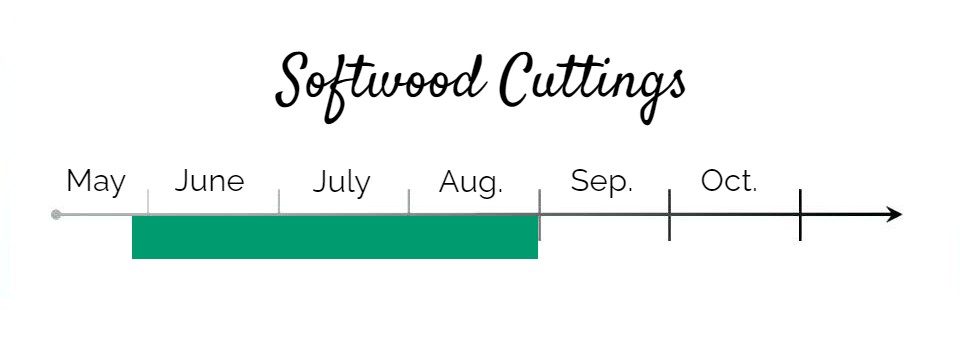
One of the best ways to propagate blueberries is by taking softwood cutting. That’s from early to late summer, on new active growth.
Follow the 6-week rule!
The current season’s growth starts to harden at about the 6-week mark after the first leaves emerge in spring. That’s the perfect timing for you to harvest your cuttings.
Here’s how to do it:
- First, identify the current season’s new growth.
- Next, take cuttings just below where the stem turns from green to brown.
- In general, a good length for cuttings are 6-8 inches, but more importantly, make sure the width is thick enough, 1/8-1/4 inch each is good.
- When you cut, you want to do it at an angle and below a node, then scuff up the bottom inch of your cuttings.
- Remove all of the leaves from the cutting except for 2-3 at the top.
- Moisten your cuttings, then dip in rooting hormone.
- Prepare your rooting medium by poking holes through it, then insert your cuttings, tamp the soil.
- Keep watering the cuttings to maintain humidity, and cover with plastic if the humidity is too low.
- Roots will form within 6-8 weeks, from there you can uncover and let them grow more foliage before transplanting.
Recommended Rooting Medium: Pure peat or sand/perlite/peat mix.
Hardwood Cuttings
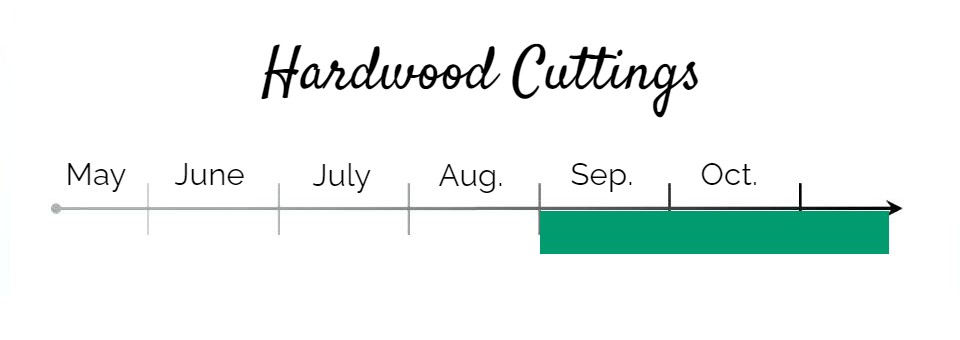
With hardwood cuttings, the best time to get them is when the plant is dormant or hasn’t woken up yet. Early Spring or during fall after the first few hard frosts.
When you propagate blueberries with hardwood, the process is pretty similar to softwood cuttings, but instead, you work with thicker, sturdier cuttings.
For example, for highbush blueberry cuttings, you can snip shoots that are 12-30 inches long and make multiple cuttings from them.
Selecting the proper branches for cuttings also affects your success, here are a few characteristics you need to look for:
- Disease/wound free.
- Past season’s growth.
- Mature & firm branch.
- No flower buds.
- 1/4 inch thickness.
When you got shoots that match all the above criteria, you can get ready to take cuttings from them.
Each cutting needs to be about 4 inches long, and where you cut is important.
For the highest chance of success, use a very sharp tool and cut at an angle, directly above a bud at the top and directly below a bud at the bottom.
In general, you should have about 4 visible buds per cutting but that’s not so important.
From there, dip the bottom end of your cuttings in rooting hormone. Prepare holes in your rooting medium (pure ground peat), place your cuttings, then tamp the soil. Your medium should have been watered thoroughly beforehand.
Hardwood cuttings root slower than softwood cuttings but will create sturdier well-established plants.
Blueberry hardwood cuttings take 3-4 months to root.
Seed
Growing blueberries from seed are the most natural way to propagate. First, there are a few things to consider.
You’ll need to either extract seeds yourself from wild blueberries or order some heirloom seeds online.
Note: Blueberry seeds need to go through a stratification process to germinate. That means a warm – cold – warm process. The cold period should be about 90 days. If you order seeds and they aren’t pre-stratified, just place them in a wet paper towel in your freezer.
You can extract them from fruits yourself but they need to have been frozen for at least 90 days.
How to Extract Blueberry Seeds from Fruits
Step 1: Add some thawed blueberries to a blender and add water up to 3/4 full.
Step 2: Blend them, then let them rest. The seeds will sink and the pulp will float.
Step 3: Scoop out the pulp and drain the water through a filter, carefully not to lose your seeds.
Step 4: Let them dry on a paper towel!
How to Sow Blueberry Seeds
The best growing medium for your blueberry seeds is peat moss. Just sprinkle the seeds evenly on top and cover them with a thin layer of soil. Cover the seedling trays and keep the moisture levels high but not wet or soggy.
Wild blueberry seeds should be fully germinated within a month!
When they’ve grown enough for transplanting, do it carefully as the roots aren’t very solid at this stage.
When transplanted, the best growing medium is peat moss mixed with sand and perlite.
How to Store Freshly Picked Blueberries
If you don’t plan on eating the blueberries right away, you should probably dehydrate or freeze them.
The best way to dehydrate is with a small fruit dehydrator, they can go for roughly $100 online.
First, you want to clean them with running water. Just clean them in the sink and pat them dry, then place them into your dehydrator.
Dehydrating wild blueberries take up to 14 hours, after that, they’ll be so much easier to preserve!
Finally, place them in a sealed mason jar, stored away in a cool dark place.
When you feel like some blueberries, just pop out the jar! They’re great to add into trail mixes or cereal in the morning. Yum!
Wild Blueberry Application in Forestry
I really think reconsidering the growth of this plant in our forests is important. There’s a potential to develop our forestry industry further with plants like these.
I live in Quebec and I often see blueberries imported from South America… What gives? Our forests are filled with them, couldn’t we open up this industry sustainably?
The local lumber industry could be much less wasteful and use Non-timber forest products that go to waste in logged areas.
We can harvest plants like wild blueberries and also reseed them.
Let me give you an example, tree planters like me go and reforest areas cut clear for lumber, and add new seedlings to populate the area. Why couldn’t we also seed plants like wild blueberry to add more value to these tree plantations?
Maximizing the use of tree plantations deserves merit, doesn’t it?
- We start by respecting the biome.
- Only plant what already naturally grows there.
- Harvest NTFP (non-timber forest products) along with lumber.
- Bring in more jobs from the harvest and the value addition after (transforming into dried fruit, or packaging for fresh sale, etc.)
Governments subsidize massive tree nurseries around here, we could also subsidize nurseries that propagate blueberies.
Food for thought?
Let me know what you think!

